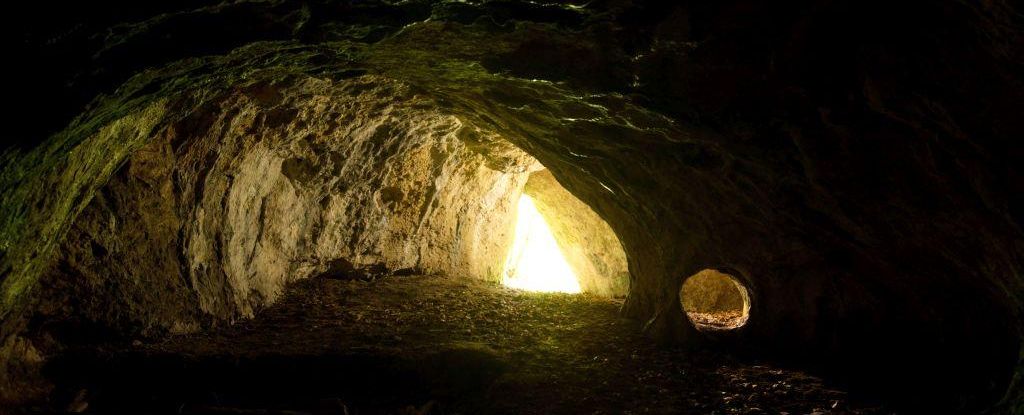Signs of a 500,000-year-old extinct human have been found in a cave in Poland.
- March 4, 2023
- 0
Prehistoric stone tools found in a cave in Poland 50 years ago are considered some of the oldest tools recently discovered in the area. The tools in the
Prehistoric stone tools found in a cave in Poland 50 years ago are considered some of the oldest tools recently discovered in the area. The tools in the

Prehistoric stone tools found in a cave in Poland 50 years ago are considered some of the oldest tools recently discovered in the area. The tools in the Great Tunnel cave in Lesser Poland are between 450,000 and 550,000 years old. This dating may allow scientists to learn more about the people who created them and their migrations and prehistoric residences in Central Europe.
For example, the time frame likely means the tools were made by an extinct human species. homo heidelbergensisis generally considered to be the last common ancestor of Neanderthals and modern humans (us). This means that this region was settled by humans at a time when the harsh climate of Central Europe required significant physical and cultural adaptation.
“For us, this is an extremely interesting aspect of the analysis,” archaeologist Malgozata Kot of the University of Warsaw in Poland told Science in Poland in October 2022, when the study was made public. “We can explore the limits of survival possibilities. homo heidelbergensis and thus observe how it adapts itself to these adverse conditions.’
The Velki Tunnel cave was excavated in the 1960s, and archaeologists returned to the area in 2016. The material layers have been dated to the Holocene, which dates back about 11,700 years, and to the Middle Paleolithic, which dates back 40,000 years. However, archaeologist Claudio Berto of the University of Warsaw believed that the dating contradicted his observations. He concluded that the animal bones found at the site were almost certainly more than 40,000 years old.
So in 2018 Kot and his team returned to the cave. They reopened and widened one of the trenches, carefully studied the different layers of material that had accumulated over the years, and collected more bone material for analysis. They found that the upper layers contained bones from animals that lived in the late Pleistocene and Holocene. But the bottom layer was noticeably older. It contained the bones of several species that lived half a million years ago: the European jaguar. panthera gombaszoegensis ; Mosbach wolf, ancestor of modern gray wolves, Canis mosbachensis ; and Denninger’s bear, ursus deningeri.
The layer that yielded the bones also contained evidence of flint cutting, including flint flakes, “voids” where other tools could be shaped, and cores from which they were hammered. There were also some ready-made tools such as knives.
“Since these objects come from the same layer as the bones, that means they are very similar in age,” Cote said. “This assumption was confirmed by excavations in the cave in 2018. They confirmed the location of the layers identified by researchers half a century ago. We also found more production waste and animal bones.”
He added that only two sites were previously known in Poland with tools from roughly the same period: Trzebnica and Rusko. However, the artifacts in the Great Tunnel cave are different. Several archaeological sites in the area show evidence of ancient human habitation, but all are in the open. Finding artifacts from that time in a cave is very unexpected, according to Kot.
“We were surprised that half a million years ago people in this region stayed in caves as they weren’t the best places to camp,” he said.
“Humidity and low temperature prevent this. A cave, on the other hand, is a natural refuge. It is an enclosed space that gives a sense of security. We found evidence that people who stayed there used fire, which probably helped tame these dark and damp places.”
The technique used to cut the flint found in the cave was also interesting. This technique is the simplest of those used by the ancients and was rarely used as a primary method during tool making; it was usually only used on poor quality materials or when there was a shortage of flint.
Only one other site, Isernia La Pineta in Italy, used this technique primarily. Tunnel Wielki flint was not of poor quality and there was no shortage of supply as it was sourced locally. This also applies to Isernia La Pineta; Finding a second site with the same features could help archaeologists understand why these ancient people used this particular technique.
Source: Port Altele
As an experienced journalist and author, Mary has been reporting on the latest news and trends for over 5 years. With a passion for uncovering the stories behind the headlines, Mary has earned a reputation as a trusted voice in the world of journalism. Her writing style is insightful, engaging and thought-provoking, as she takes a deep dive into the most pressing issues of our time.